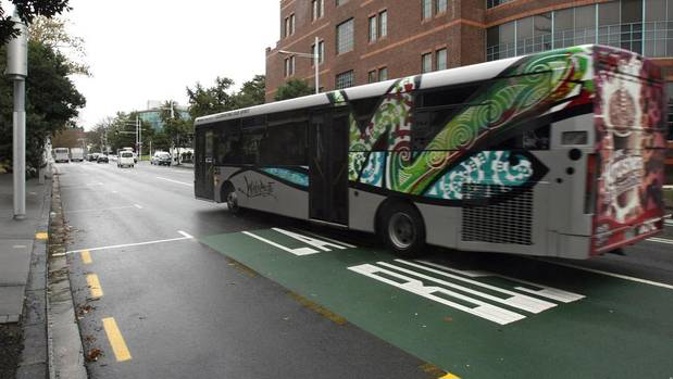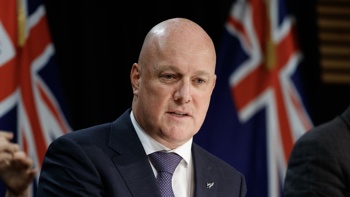
Auckland Transport's CCTV cameras are doling out 220 infringements a day to motorists caught driving in bus lanes.
Hi-tech 24-hour cameras, covering 40km of Auckland CBD bus lanes, issued 80,574 infringements to drivers from March 1, 2018 to the end of February 2019.
The cameras racked up $11.3 million in fines over the 12-month period, a staggering $4m jump from 2017 when AT issued $7,318,200 in fines for bus lane infringements.
Automobile Association spokesman Barney Irvine said 220 infringements a day seemed high, underlining concerns about whether the rules were clear enough for motorists.
Bus lanes allow access to buses, motorcycles, scooters and cyclists. Other vehicles can only use the lanes for up to 50m before turning left.
Irvine said the 50m distance was too short.
"We all know how difficult it is to judge distances by sight alone. No doubt there are specific sections of bus lane where a lot of people are getting pinged for entering the bus lane too early to make a left turn.
"In these situations, rather than leaving it all to drivers' judgment, we would like AT to look at using special lane markings to show people where they can enter the lane."
Irvine said AT's original policy was to only issue infringements when people drove in bus lanes for 80m or more.
However, it appeared this grace period had disappeared and the rule was now more rigid.
"We are seeing more and more cases where AT is applying the 50m limit instead. This has happened without any announcement, and doesn't sit comfortably with us.
"In parts of Australia, motorists are allowed to travel up to one block along the bus lane and then exit at the intersection. We think this is fairer and easier for people to comply with."
AA said the situation required a national law change by the Government.
The fine for illegally driving in a bus lane is $150.
AT spokesman Mark Hannan said the number of fines was minimal when compared to the number of vehicle trips per day across Auckland's 7600km of roads.
"The law is set by the Government not AT. It says 50m, but Auckland Transport only enforces when someone has driven into the lane at 70m or more.
"We give people at least 20m leeway and that policy has not changed. We are trialling markings on roads like Fanshawe St where the bus lane solid green marking line changes to a broken line when you can enter the lane.
"All bus and transit lanes are clearly marked by signage and on the road surface."
The 16 cameras currently in operation are on Fanshawe St, Queen St, Hobson St and Khyber Pass Rd.
AT plans to install a further six CCTV cameras this winter to monitor bus lanes on Grafton's Park Rd and Great North Rd in Grey Lynn.
Irvine said AA did not have a problem bus lane enforcement.
"Bus lanes play an important role in the city's transport network, and if they're going to work properly, the rules need to be enforced.
"There are big differences in the rules that apply ... there's plenty of opportunity for AT to do more with signage and public education to help make the rules clear, so people don't have to rely on local knowledge.
"It's about making it as easy as possible for people to do the right thing."
The cameras feature upgraded hardware and use a fibre connection to capture 24-hour surveillance of bus lanes.
John Strawbridge, group manager of parking services and compliance, said they had purpose built analytics that "generate an alert... the CCTV footage is then reviewed by an experienced staff member who makes the decision about whether an infringement should be issued".
This replaced the old system where an AT enforcement officer would stand on the side of the road and manually operate a camera.
Each camera cost about $1000, which did not include additional installation and fibre connection costs.
Take your Radio, Podcasts and Music with you









